Bridal Beauty Rituals from Around the World
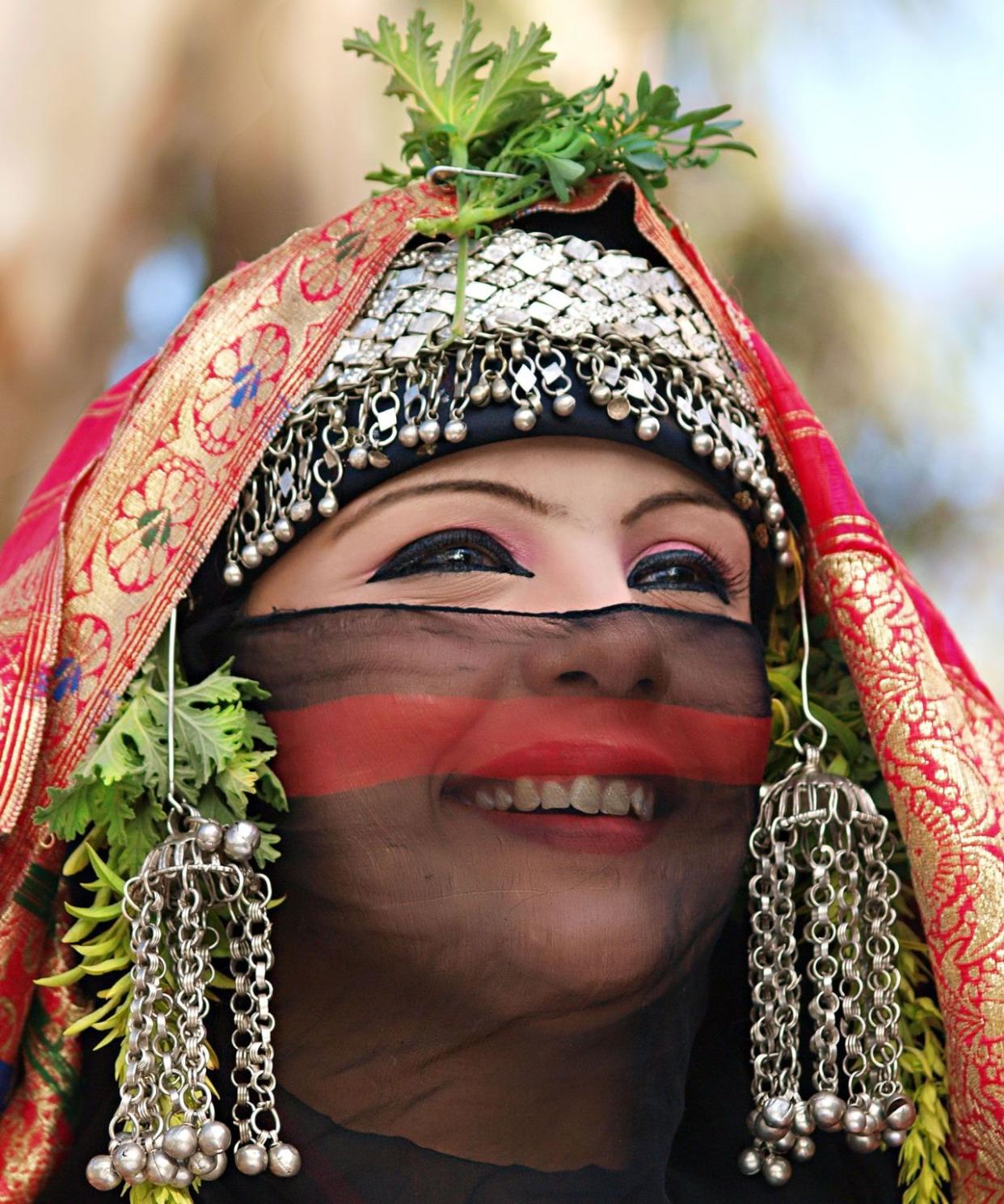
No matter where in the world a wedding takes place, it seems a universal truth that the bride will want to look and feel her best on the big day. For many, beauty prep begins long before her trip down the literal or figurative aisle, and can be deeply rooted in history and culture. Though some people are opting out of traditional weddings these days, we decided to take a look at handful of beauty rituals that accompany this big life step. From nose piercings to ancient baths, click ahead for a small slice of matrimonial beauty across the map.
Related: 30 Photos Of Unretouched Butts, In Case You Forgot What They Really Look Like
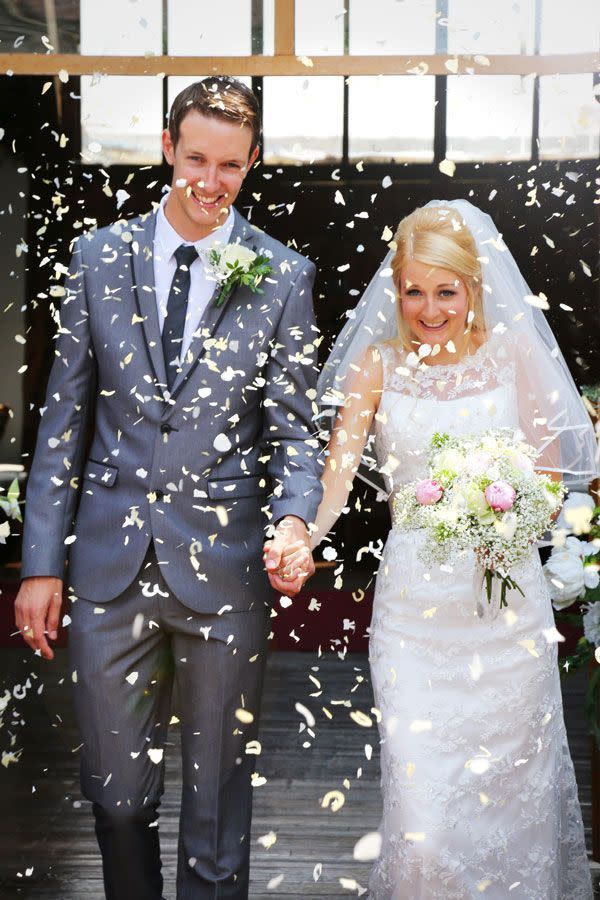
PHOTO: TOM AND STEVE/GETTY IMAGES.
The United States
For many American women, even deciding on the smallest wedding day detail, like a lipstick or a mani, can feel agonizing. Traditionally, brides have assembled a team of their nearest and dearest to help make these tough calls, in the roles of bridesmaids and maid of honor. Due to time and money constraints, and stress in general, more and more women are opting out of having (or being in) a traditional wedding party. In response, companies like The Invisible Bridesmaid are popping up to help with pre-wedding services and bridal prep. Their founder, former New York fashion PR maven turned wedding expert, Jessica Janik, shares what beauty trends are buzzy amongst her American clients.
“Every bride wants to look like she’s glowing on her wedding day, so the focus has shifted from the eyes to the face,“ she says. "There’s a movement away from dramatic smoky eyes to natural matte colors and great lashes. Additionally, my brides tend to want a lip color that is soft and a bit toned down from the red lip trend that we were seeing. I’ve noticed a lot of my brides going the route of lip injections, too.”
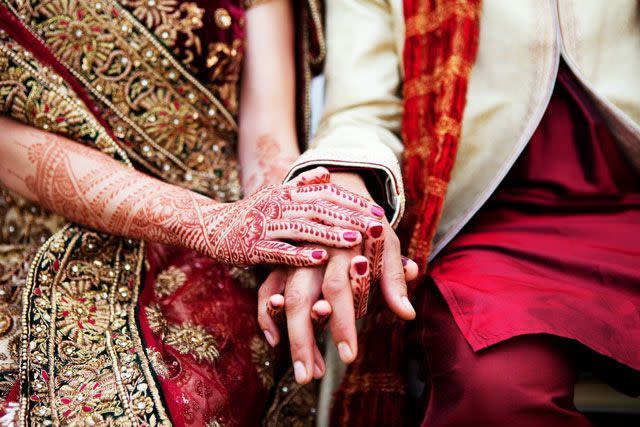
PHOTO: BLEND IMAGES/ALAMY STOCK PHOTO.
India
Pop culture icons like Madonna and Rihanna have made mehndi or henna trendy stateside in recent years, but it’s deeply rooted in Indian wedding traditions. “Mehndi is applied to brides the day before their wedding ceremony,“ says Janik, who works with many Indian clients. A professional henna artist or family member paints with a powder blend of medicinal plants, on the bride’s hands and feet. It is left on overnight to dry and removed the following day, leaving behind intricately beautifully designs that last over a week. But this ritual is not only for aesthetic purposes, ”[It is said to help] de-stress brides and help relieve tension,” says Janik.
Like the American bride, Indian women also want radiant skin on their wedding day. “Brides often apply a mixture of turmeric, lemon, and honey on their skin to appear glowing on their special day,“ says Janik. Many also wear a tilak or small red dot on their forehead between the eyebrows, similar to the bindi many Hindu women wear after marriage. When a tilak is applied on this major nerve point, it is said to prevent loss of energy. It also activates the Adhya Chakra, which supplies blood to facial muscles, making the bride look more fresh.
Related: 25 Real Photos Of Women’s Breasts (NSFW)
Wedding traditions differ a bit in southern India where brides are known for their stunning, adorned braids that fall down their backs, often past their waists. Flowers and Jada Billa, lavish silver and gold hair jewelry accessories, are woven into their plaits before the big day.
A bride often changes her outfits several times throughout the wedding, so she wants to make sure her makeup will complement all of her looks — typically it’s dark black eyeliner and poppy shades to match the color of her saris.
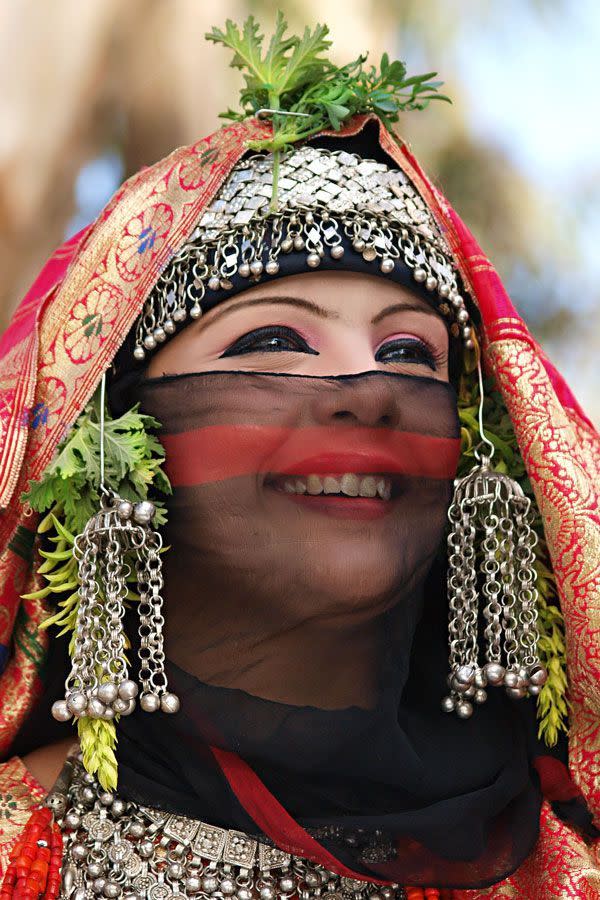
PHOTO: KHALID ALKAINAEY/GETTY IMAGES.
Yemen
Traditional Yemen weddings are lavish occasions with a massive social component (there are often thousands of guests). The bride starts her beauty prep early — five days before — and is surrounded by the women in her life the whole time.
On the first day, the traditional Yemeni bride’s house is filled with roses, and she puts on the Qamis or a veil that will cover her face until the wedding. But more modern brides have been opting out of this, reports the National Yemen. The following day the bride visits the Hammam or Turkish bath house with her ladies (the groom often goes to the baths with his crew, too) to get her skin soft and bright. She wears a red onyx necklace to the baths that is meant to fend off the evil eye.
Related: What Losing 110 Pounds REALLY Looks Like
Henna is also popular in Yemen, where the third day is the henna party, when ornate symbols are painted on the bride’s hands and feet. But since a lot of Yemeni brides wear white dresses, this is another tradition more modern brides are skipping. But many brides also find time to go to hairdresser, and for the ceremony, they are decked out in gold jewelry and veils.
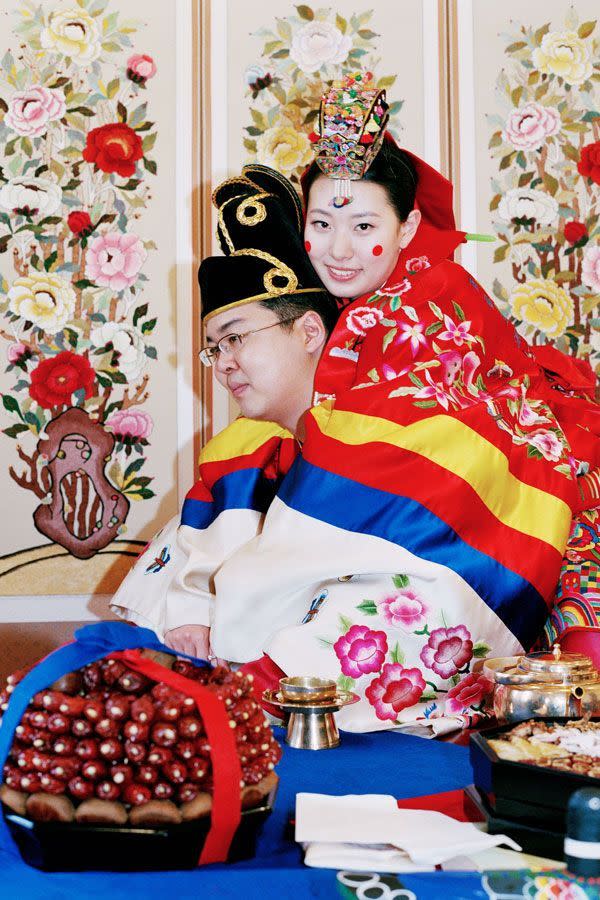
PHOTO: SAMUEL ZUDER/LAIF/REDUX.
South Korea
In South Korea, it’s become commonplace for brides to throw a Western style wedding (white dress etc.) and then have a traditional South Korean ceremony for their families known as paebaek. For the latter, brides don traditional wedding cloaks and paint red dots on their cheeks. Some say it is to ward off bad energy and protect them from evil (do we see a common thread here with the role of red?), while others say the ruddy cheeks symbolize youth and virginity.
Related: The True Story Of Eyebrow Transplants
The bride and groom both dress in ceremonial Korean wedding attire — she in a traditional dress called with an elaborate topcoat and flowing sleeves. A ceremonial coronet called a jokduri is placed on her head and a long hairpin with a dragon head at one end is tied in her hair.
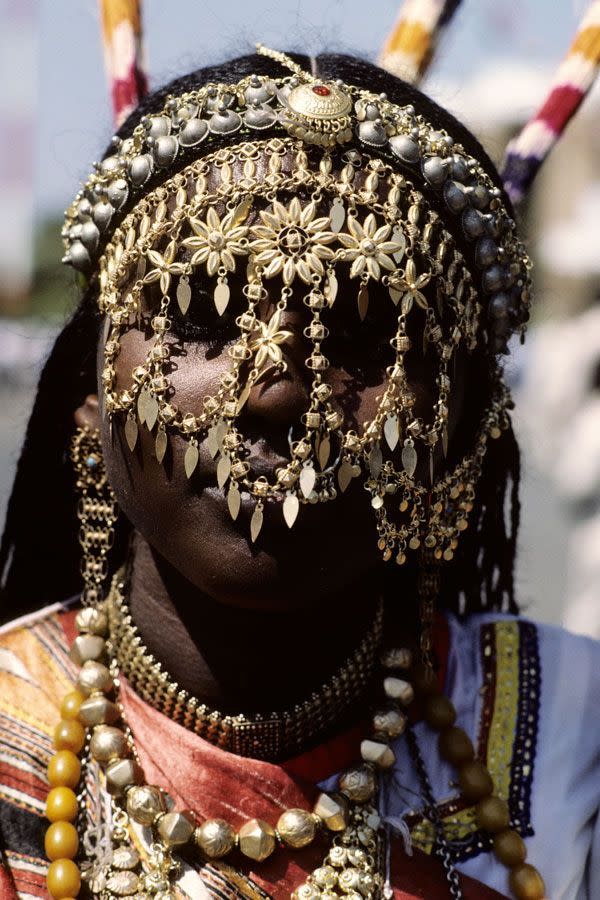
PHOTO: HEMIS/ALAMY STOCK PHOTO.
Djibouti
In this African country, the brides’ faces are often adorned in gold chains. The nose is customarily pierced prior to one’s wedding day and embellished with a festive chain. The ornate decorations are believed to enhance the bride’s beauty. Do you think this is where Riccardo Tisci looked for inspiration for Givenchy’s recent face jewelry?
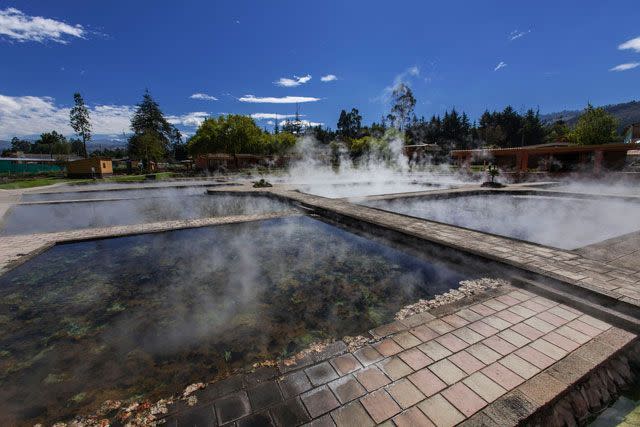
PHOTO: IMAGEBROKER/ALAMY STOCK PHOTO.
Peru
In Peru, Inca baths are revered as pure and used to detoxify the soul. These pools are thought to have cleansing properties. Though not as popular today, traditionally brides would bathe in these waters seeking purification before their wedding day. The revered waters were also thought to bless the bride with wealth and fertility.
Related: This 30-Day Upper-Body Challenge Will Transform Your Arms & Shoulders
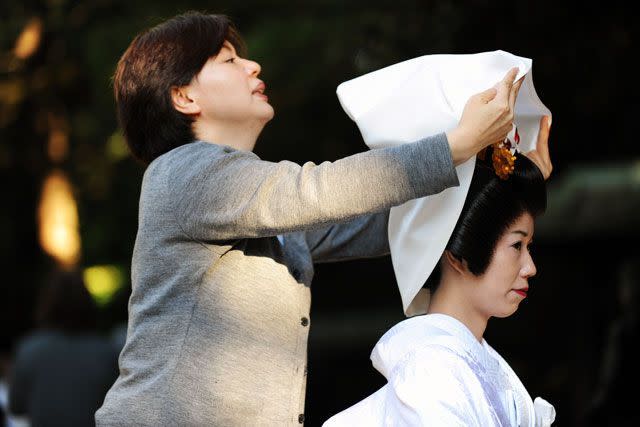
PHOTO: MATTHEW ASHTON/ALAMY STOCK PHOTO.
Japan
In traditional Japanese wedding ceremonies, the brides also wear a white dress and headgear — a white kimono and a hood, rather than a princess gown and a veil. An old-fashioned bride wears her hair in a sleek"wedding only” topknot. But since you have to have some seriously long hair to create this look, many wear heavy wigs. Once the hair is set, a white hood is placed over the hair to symbolically cover the wife-to-be’s “horns of jealousy.”
By Aimee Blaut & Megan Cahn
Related: The Secret To The Perfect Plank

